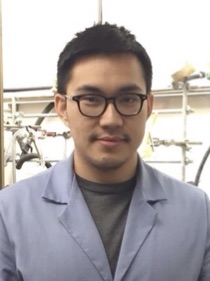Org. Synth. 2016, 93, 319-330
DOI: 10.15227/orgsyn.093.0319
Preparation of (S)-Nonafluorobutanesulfinamide
Submitted by Apiwat Wangweerawong, Scott Kolmar, and Jonathan A. Ellman
*1
Checked by Steve Han and Chris Senanayake
1. Procedure
A.
(1S,2R)-1-(2,4,6-Trimethylbenzenesulfonamido)-2,3-dihydro-1H-inden-2-yl-(S)-nonafluorobutanesulfinate (2). A flame-dried 250 mL three-necked round-bottomed flask with 24/40 ground glass joints is equipped with a 3 cm Teflon-coated magnetic oval stir bar and fitted with two rubber septa and a low temperature thermometer as an internal temperature probe (
Note 1). The flask is flushed with nitrogen for 10 min via a nitrogen line inlet and then 40 mL of anhydrous
diethyl ether (
Note 2) is added by syringe. The reaction flask is placed in a dry ice-acetone bath.
Nonafluoro-1-iodobutane (3.53 mL, 20.5 mmol, 1.55 equiv) (
Note 3) is added by syringe, and the resulting solution is stirred at 700 rpm while an ~3 M
ethylmagnesium bromide solution in
diethyl ether (6.76 mL, 2.94 M, 19.9 mmol, 1.50 equiv) (Notes
3 and
4) is added dropwise via a syringe over 3 min with the internal temperature maintained below -65 °C. After the addition is complete, the reaction solution turns from a clear light yellow color to a cloudy mixture. The fume hood light is turned off, and the flask is covered with aluminum foil to protect the reaction mixture from light, and the Grignard reagent mixture is stirred for 1 h at -78 °C. While the Grignard reagent mixture is being stirred, to a separate one-necked oven-dried 100 mL round-bottomed flask with a 24/40 ground glass joint is charged with the
oxathiazolidine oxide 1 (5.0 g, 13.2 mmol, 1.0 equiv) (
Note 5) prepared using the previously reported two-step
Organic Syntheses procedure.
3 After fitting the flask with a rubber septum and flushing it with nitrogen for 5 min, 40 mL of anhydrous
THF (
Note 2) is added by syringe before the mixture is shaken until complete dissolution has occurred. The resulting
THF solution is transferred via cannula to the 250 mL flask containing the Grignard reagent (1 h after
ethylmagnesium bromide addition) in under 6 min while keeping the internal temperature below -60 °C. The 100 mL flask is then washed with an additional 1 mL of anhydrous
THF, which is transferred over to the 250 mL flask via cannula. The resulting reaction mixture in the 250 mL flask is stirred at -78 °C for 1 h (
Note 6) before the reaction is quenched by a slow dropwise addition of a 4.1M
acetic acid in
THF (6.5 mL, 26.6 mmol, 2.0 equiv) (
Note 3) over 4 min to keep the internal temperature below -60 °C. After warming up to ambient temperature over ca. 30 min, the mixture is transferred to a 250 mL separatory funnel. Additional deionized
water (40 mL) and
ethyl acetate (20 mL) are used to ensure that all of the product is transferred. The aqueous layer is separated and further extracted with
ethyl acetate (3 x 20 mL). The combined organic layer, which has a cloudy appearance, is washed with a saturated aqueous
Na2S2O3 solution (20 mL) with vigorous shaking until the cloudy appearance changes to clear solution. The organic layer is then washed with saturated aqueous
NaCl solution (15 mL) and dried over
sodium sulfate (15 g, 10 min). The drying agent is removed by vacuum filtration through a 60 mL medium fritted glass funnel followed by washing the flask and drying agent with
ethyl acetate (3 x 10 mL). The filtrate is concentrated using a rotary evaporator (26 °C, <50 mmHg) and then dried with a high vacuum line (1.1 mmHg) to afford the crude product
2 (7.0 g, 88%) as an off-white solid (
Note 7). The crude product is of sufficient purity by
1H NMR (
Note 8) to be used directly in Step B.
B. (S)-Nonafluorobutanesulfinamide (3). A flame dried 250 mL three-necked indented Morton style round bottom flask with 24/40 ground glass joints is equipped with a 3 cm Teflon-coated magnetic oval stir bar and is fitted with two rubber septa and an oven dried 125 mL pressure-equalizing addition funnel with 24/40 ground glass joints and a rubber septum at the top. The flask is flushed with nitrogen via a nitrogen line inlet for 10 min and then charged with 7.0 g of 2 at which point a rubber septum is replaced with a low temperature thermometer as an internal temperature probe (Note 1). To the flask is then added 22 mL of anhydrous THF via syringe (Note 2) followed by stirring at 700 rpm to give a 0.3 M clear yellow solution of 2 in THF. The solution is cooled to an internal temperature of -78 °C using a dry ice-acetone bath. A 2.0 M solution of NaHMDS in THF (17.6 mL, 35.1 mmol, 3 equiv assuming crude 2 is 100% pure) (Notes 3 and 9) is then added dropwise via the 125 mL pressure-equalizing addition funnel over 5 min with the internal temperature maintained below -65 °C. The mixture is stirred for 3.5 h at -78 °C at which time the appearance of the solution changes to a dark brown color. The reaction is monitored by TLC (Note 10). The reaction is quenched by addition of 40 mL of saturated aqueous NH4Cl solution dropwise via the equipped pressure-equalizing addition funnel over 10 min with the internal temperature maintained below -60 °C. After removing the dry ice-acetone bath, the reaction mixture is allowed to warm to ambient temperature over ~30 min. The biphasic mixture is then stirred at 1000 rpm for 16 h at ambient temperature (Note 11). The mixture is then transferred to a 250 mL separatory funnel with additional deionized water (20 mL) and ethyl acetate (20 mL) used to ensure the complete transfer of crude product. The aqueous layer is separated and further extracted with ethyl acetate (3 x 20 mL). The combined organic layer is washed with saturated aqueous NaCl solution (15 mL) and then dried over sodium sulfate (15 g, 10 min). The drying agent is removed by vacuum filtration through a 60 mL medium fritted glass funnel and washed with three 10 mL portions of ethyl acetate. The filtrate is concentrated using a rotary evaporator (26 °C, <50 mmHg) to afford a brown oil. For purification, the crude material is solubilized in 3 mL of 10% MTBE (by volume) in dichloromethane and loaded onto a 6.5 cm diameter column (35 cm in length) containing 250 mL (about 100 g) of silica gel (Note 12) that has been prepacked with 10% MTBE (by volume) in dichloromethane. The flask is washed with 10% MTBE (by volume) in dichloromethane (3 x 10 mL) with the washings loaded onto the silica gel. Fractions are collected using 18 x 150 mm disposable culture tubes using 10% MTBE (by volume) in dichloromethane as eluent. To recover 4, fractions containing the N-sulfonylaminoindanol 4 and its O-silyl-protected derivative are identified by TLC, (Note 13) combined, and subjected to silyl deprotection using TBAF (Note 14). Fractions containing the product sulfinamide 3 are combined and concentrated using a rotary evaporator (26 °C, 100 mmHg). This solid material is subsequently dried with a high vacuum line (1.1 mmHg) to provide 2.50 g (76% over two steps) (Note 15) of enantioenriched (>99% ee) (Note 16) (S)-nonafluorobutanesulfinamide 3 as an off-white solid, mp 73-75 °C (Notes 17 and 18).
2. Notes
1. THERMCO 76mm immersion low temperature thermometer equipped with a thermometer adapter (30.5 cm length, temperature range -100 to 50 °C).
2.
THF (HPLC grade) is obtained from Fisher Scientific and
diethyl ether (ACS reagent, inhibitor-free) is obtained from Acros Organics. The solvents are purified by passage through activated alumina using a Glass Contour solvent purification system. Chloroform-D (CDCl
3, D, 99.8%) is purchased from Cambridge Isotope Laboratories and stored over
potassium carbonate.
3.
Nonafluoro-1-iodobutane (97%) is obtained from Alfa Aesar and used as received.
Ethylmagnesium bromide (3M in
diethyl ether) is obtained from Strem Chemicals and titrated before use.
Acetic acid (ACS, glacial) is obtained from J.T. Baker and used as received.
Sodium bis(trimethylsilyl)amide (2 M
NaHMDS in
THF) is obtained from Alfa Aesar and used as received.
Tetrabutylammonium fluoride (1M in
THF) is obtained from Strem Chemicals and used as received.
4. The molarity of the Grignard reagent is determined by titration according to the procedure of Knochel.
2 Specifically, to a flamed-dried 1 dram vial flushed with nitrogen for 5 min and equipped with a magnetic stir bar is weighed out 100 mg of iodine before dissolving in 1.0 mL of a 0.5 M solution of LiCl in
THF. The resulting dark brown solution is cooled to 0 °C with an ice bath before
ethylmagnesium bromide is added slowly drop by drop to the stirred solution via a 1 mL syringe until the solution turns light yellow and then becomes colorless. The titration is repeated and the average molarity value of the Grignard reagent from the two titrations is obtained.
5.
Oxathiazolidine oxide is prepared by a previously reported two-step
Organic Syntheses procedure.
36. The reaction progress can be monitored by
1H NMR by quenching a 0.1 mL sample of the reaction mixture (obtained via syringe and needle) with
acetic acid in
THF (3 drops of AcOH in 0.5 mL of
ethyl acetate). The resulting mixture is concentrated to dryness using a rotary evaporator before dissolving the material with CDCl
3 followed by transfer to a NMR tube. Reaction completion can be monitored by following the disappearance of the triplet of doublet peak at 5.85 ppm, which corresponds to the
oxathiazolidine oxide starting material.
7. A duplicate run on the same scale provided 7.5g (94%) of an off white solid. This material was also used in the next step without purification.
8. The crude product
2 is used directly in the next step without further purification and has been characterized as follows:
1H NMR
pdf(400 MHz, CDCl
3, selected signals) δ: 2.32 (s, 3H), 2.73 (s, 6H), 3.08 - 3.28 (m, 2H), 5.00 (dd,
J = 9.6, 4.7 Hz, 1H), 5.21 - 5.26 (m, 2H), 7.00 (s, 2H), 7.12 - 7.18 (m, 1H), 7.20 - 7.24 (m, 2H), 7.24 - 7.32 (m, 1H).
9. At least two equiv of
NaHMDS is required for the reaction, one equiv to react with the sulfinate ester group of
1 and the other to deprotonate the sulfonamide group of addition product
2.
10. The reaction is monitored by TLC (Merck TLC Silica gel 60 F
254) using 20%
ethyl acetate in hexanes as eluent. The TLC plate is first visualized with a 254 nm UV lamp then with a KMnO
4 staining solution. The silyl-protected
N-sulfonylaminoindanol has an R
f value of 0.70 while the
N-sulfonylaminoindanol has an R
f value of 0.19.
11. Stirring the biphasic mixture for at least 4 h is necessary to ensure complete cleavage of the trimethylsilyl groups from the sulfinamide product.
12. Silica gel (SiliaFlash® P60, 230-400 mesh) is obtained from Silicycle.
13. Each fraction is analyzed by thin layer chromatography (Merck TLC Silica gel 60 F
254) using 10%
MTBE in
dichloromethane as eluent. The TLC plate is first visualized with a 254 nm UV lamp and then is stained with a KMnO
4 staining solution. The reaction product
3 has an R
f value of 0.31, the
N-sulfonylaminoindanol 4 has an R
f value of 0.59, and the O-silyl derivative has an R
f value of 0.90.
14. The combined fractions 9-43 contain a mixture of
N-sulfonylaminoindanol 4 and its
O-silyl derivative and are concentrated using a rotary evaporator (26 °C, 100 mmHg) to afford 12.0 g of dark red-brown oil. The material is transferred to a one-necked 250 mL round bottom flask with a 24/40 ground glass joint using 100 mL of
THF (
Note 2) to solubilize the material and assist with transfer. To the stirred solution (700 rpm) at ambient temperature is then added 30 mL of 1 M
TBAF (29.7 mmol, 1 equiv assuming that the material is 100% the
O-silyl derivative of
4) in
THF (
Note 3). A rubber septum is placed on the flask along with a N
2 inlet. After stirring at ambient temperature for 1 h, the mixture is transferred to a 250 mL separatory funnel. Additional
ethyl acetate (50 mL) and deionized
water (50 mL) are used to achieve the complete transfer of material. The aqueous layer is separated and further extracted with
ethyl acetate (2 x 20 mL). The combined organic layer is washed with deionized
water (2 x 30 mL) and saturated aqueous
NaCl solution (30 mL) before drying over
sodium sulfate (15 g, 10 min). The drying agent is removed by vacuum filtration through a 200 mL medium fritted glass funnel and washed with three 10 mL portions of
ethyl acetate. The filtrate is concentrated to dryness using a rotary evaporator (26 °C, <50 mmHg) before it is triturated with 50 mL of hexanes and vacuum filtered through a Buchner funnel (6.5 cm diameter) equipped with filter paper to afford 10.0 g of a light brown solid material. For purification, a 250 mL Erlenmeyer flask is charged with the crude material and 40 mL of
ethyl acetate. The mixture is heated to 50 °C with swirling to dissolve all of the material before 80 mL of hexanes is layered on top. The flask is covered with aluminum foil and then is stored at -20 °C for 16 h. The contents of the flask are vacuum filtered through a Buchner funnel (6.5 cm diameter) equipped with filter paper. The crystalline solid is crushed to a powder using a porcelain mortar and pestle before it is dried with a high vacuum line (1.1 mmHg) to provide 8.0 g (76% recovery over 3 steps) of the
N-sulfonylaminoindanol 4 as an off-white solid, mp 148-150°C (
Note 15). The analytical data for this compound are consistent with previously reported data.
315. A second reaction on identical scale provide 2.45 g (66% over two steps) of the title compound with identical physical properties.
16. The enantiomeric excess of
3 is determined using an Agilent 1100 series HPLC (1.0 mL/min flow rate) equipped with a mutiwavelength detector with monitoring at 230 nm and a Chiralpak IB column. A mixture of 10% ethanol in hexanes is used as the eluent over 30 min: t
R = 7.4 min (
S) and 11.4 min (
R).
17. Melting points are obtained using Electrothermal Melting Point Apparatus.
18. The sulfinamide
3 has been characterized as follows: IR (film): 3344, 3241, 3106, 1352, 1230, 1198, 1183, 1135, 1021, 725, 695 cm
-1.
1H NMR
pdf(400 MHz, CDCl
3) δ: 4.73 (s, 2H);
13C{
1H} NMR
pdf(100 MHz, CDCl
3) δ: 111.8 - 105.6 (m);
19F NMR
pdf(376 MHz, CDCl
3) δ: -125.97 to -126.20 (2F), -122.48 to -123.27 (1F), -121.76 to -121.93 (1F), -121.34 to -121.66 (2F), - 80.77 (tt,
J = 9.7, 2.3 Hz, 3F); HRMS [M + H] calcd for C
4H
3F
9NOS: 283.9792; Found: 283.9769. Anal. Calcd for C
4H
2F
9NOS: C, 16.97; H, 0.71; N, 4.95. Found: C, 17.09; H, 0.71; N, 5.34.
Working with Hazardous Chemicals
The procedures in
Organic Syntheses are intended for use only by persons with proper training in experimental organic chemistry. All hazardous materials should be handled using the standard procedures for work with chemicals described in references such as "Prudent Practices in the Laboratory" (The National Academies Press, Washington, D.C., 2011; the full text can be accessed free of charge at
http://www.nap.edu/catalog.php?record_id=12654). All chemical waste should be disposed of in accordance with local regulations. For general guidelines for the management of chemical waste, see Chapter 8 of Prudent Practices.
In some articles in Organic Syntheses, chemical-specific hazards are highlighted in red "Caution Notes" within a procedure. It is important to recognize that the absence of a caution note does not imply that no significant hazards are associated with the chemicals involved in that procedure. Prior to performing a reaction, a thorough risk assessment should be carried out that includes a review of the potential hazards associated with each chemical and experimental operation on the scale that is planned for the procedure. Guidelines for carrying out a risk assessment and for analyzing the hazards associated with chemicals can be found in Chapter 4 of Prudent Practices.
The procedures described in Organic Syntheses are provided as published and are conducted at one's own risk. Organic Syntheses, Inc., its Editors, and its Board of Directors do not warrant or guarantee the safety of individuals using these procedures and hereby disclaim any liability for any injuries or damages claimed to have resulted from or related in any way to the procedures herein.
3. Discussion
Chiral α-branched amines are important synthetic targets due to their prevalence in bioactive natural products, pharmaceutical agents and agrochemicals. One of the most frequently employed approaches for the asymmetric synthesis of α-branched amines is the diastereoselective addition of nucleophiles to
N-
tert-butanesulfinyl imines.
4 However, for some types of nucleophiles, additions do not occur because the
N-
tert-butanesulfinyl imines aren't sufficiently electrophilic. The Liu group has recently investigated
N-perfluorinated alkanesulfinyl imines for the asymmetric synthesis of amines, including with Strecker reactions,
5,6 vinylogous Mannich reactions,
7 and inverse electron demand aza Diels-Alder cycloadditions.
8 In our efforts to develop asymmetric Rh(III)-catalyzed C-H bond additions to imines we found that
N-
tert-butanesulfinyl aldimines had insufficient electrophilicity for additions to occur. In contrast, Rh(III)-catalyzed C-H bond additions to
N-perfluorobutanesulfinyl aldimines proceeded in moderate to good yields and with very high diastereoselectivities (95:5 to >99:1 dr).
9,10 We have also found that the
N-perfluorobutanesulfinyl imino ester derived from ethyl glyoxylate undergoes thermal aza Diels-Alder reactions in good yields and with high stereoselectivities, whereas for the corresponding
N-
tert-butanesulfinyl imino ester, cycloadditions did not occur.
10
Liu and coworkers were the first to report on the asymmetric synthesis of perfluorinated alkanesulfinamide chiral amine reagents, including
perfluorobutanesulfinamide 3, which is the focus of this procedure.
5 Although this multi-step sequence proceeds in good overall yield and enantiopurity (Scheme 1), it requires two flash column chromatography purification steps, including one for the separation of diastereomers.
Scheme 1. Liu’s Asymmetric Synthesis of Perfluorobutanesulfinamide
To develop a more practical route for the preparation of the perfluorobutanesulfinamide, we focused on Senanayake’s chiral sulfinyl transfer auxiliary approach.
11 The two-step synthesis of perfluorobutanesulfinamide from Senanayakes’s 2-aminoindanol-derived sulfinyl transfer reagent described in this report proceeds in good overall yield and with excellent enantiomeric purity. The described method uses inexpensive nonafluoro-1-iodobutane as a starting input and requires only one straightforward flash column chromatography. Additionally, the chiral auxiliary
3 can be recovered in good yields.
Appendix
Chemical Abstracts Nomenclature (Registry Number)
Perfluorobutanesulfinamide: (S)-1,1,2,2,3,3,4,4,4-nonafluorobutane-1-sulfinamide; (3) (1303994-31-1)
Oxathiazolidine oxide: (2R,3aS,8aR)-3-(mesitylsulfonyl)-3,3a,8,8a-tetrahydroindeno[1,2-d][1,2,3]oxathiazole 2-oxide; (1) (473554-02-8)
N-Sulfonylaminoindanol: N-((1S,2R)-2-hydroxy-2,3-dihydro-1H-inden-1-yl)-2,4,6-trimethylbenzenesulfonamide; (4) (473554-01-7)

|
Apiwat Wangweerawong received his B.S. in Biochemistry in 2011 from Florida State University under the mentorship of Professor Gregory Dudley. Since 2011, he has been a graduate student in the group of Professor Jonathan Ellman working on the asymmetric synthesis of branched amines. |

|
Scott Kolmar obtained his B.S. in Chemistry from Tulane University in 2013. His undergraduate research focused on the pH dependent kinetics of glucosidase enzymes under the supervision of Professor Larry Byers. In 2013, he started his Ph.D. studies with Professor Jonathan Ellman at Yale University working on the synthesis of fluorinated sulfinamides. He is currently studying the mechanisms of small molecule proton-coupled electron transfer reactions in the group of Professor Jim Mayer at Yale University. |

|
Jonathan Ellman earned his B.S. degree from MIT in 1984 and his Ph.D. degree from Harvard as an NSF predoctoral fellow with Professor David Evans in 1989. After an NSF postdoctoral fellowship with Professor Peter Schultz at the University of California at Berkeley, he began his independent career at the same institution in 1992 where he rose to the rank of Professor. Since 2010 he has been the Eugene Higgins Professor of Chemistry and Professor of Pharmacology at Yale University. He is the editor for Volume 88 of Organic Syntheses. |

|
Zhengxu (Steve) Han received his B.S degree and Ph.D. in organic chemistry from Lanzhou University with Professor You-Cheng Liu. In 1991, he moved to Tübingen University, Germany as a fellow of the Alexander von Humboldt Foundation with Professor Anton Rieker. After four years of postdoctoral research with Professor Stuart Linn at University California, Berkeley and Professor Lee Magid at the University of Tennessee, Knoxville, he joined the process research group at Sepracor, Inc., in 1998 and then Boehringer Ingelheim (BI) in 2005. He is now a senior research fellow at BI and his research interest center on efficient process and methodology development for asymmetric synthesis. |
Copyright © 1921-, Organic Syntheses, Inc. All Rights Reserved